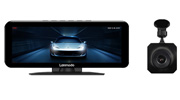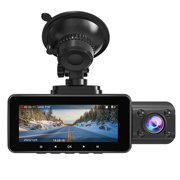Many people, especially the aged, do not like driving at night. They know it's difficult and dangerous, as most traffic accidents happen at night 3x than during the day. However, night driving is, from time to time, unavoidable. There are instances when you need to rush to the airport to catch a flight, or you drive back home after you sign out from a late shift. It is also possible that you attended a late night event, so it is already dark when you drive for home.
To help you stay safe when driving at night, there are rules of behavior that we would like to remind you about. These are the do's and dont's for safe night driving which, when followed, will help you reach your destination unhurt and alive.
DO's
1. Stay focused on the road
When you drive at night there are some things that can pull you away from concentrating on your driving. A deer or any animal, beautiful scenery, or an incident can cause a distraction. Be aware that you are driving a machine, and the road at night is a dangerous place. Remaining focused will help you and your passengers stay away from danger.
2. Use night driving system to help
A night vision system is not a new device, but there is an innovative product that makes your night driving easier and safer. This is the Lanmodo night driving system, which has vision that extends beyond the distance of normal car headlights. It also has an 8”IPS screen and shows images at 1080p Full HD, which gives you much better quality visual effects, so you can judge the conditions on the road quickly and clearly. The 45 deg. wide-angle vision provides you with an enlarged view of the road. As the distance of the night vision is extended up to 300 meters, you will know in advance the road situation ahead.
The Lanmodo Vast Pro night driving system has been designed for use in many driver-unfriendly situations - the darkness of the night, heavy rains, fog, and other harsh weather conditions that reduces your visibility.

3. Use the headlights correctly
Check the position of your headlights. Even if you have a brand new car, your headlights may be pointed lower than it should be. Aiming them correctly would be worth your effort. Also make sure that nothing is blocking the light by cleaning and removing the road grime from your headlights as often as possible.
Cars of older models usually have headlights with plastic covers, that over time, may become yellowish or faded. This may result in a dim glow. You can fix it by a headlight polish, and your light will shine brightly through.
DONT'S
1. Don't stare at oncoming bright lights
Your concentration during night driving will be seriously disrupted by bright lights. Avoid staring at the high beams and turn your gaze away from other lights on the road. It's easy to get distracted by the lights, because you are used to the dim glow of your car's instrument panel and the low light of the road ahead.

2. Don't drive at full speed
Night driving usually requires slower speed than during the day. The reason is because there is lower visibility at night time. Seeing and reacting to pedestrians, traffic hazards and other obstacles takes a longer time. It is a smart choice to drive slower because you are giving yourself more time to react to any potential problem that you will encounter along the road.
3. Don't drive in drunk or tired condition
Stay awake and alert on the road. Don't drink and drive; if you've been drinking, just ask for a ride from a friend who is sober. Or you can simply call a cab. If you are going to a drinking party, make sure that you have a driver who will take you home. And when you feel too tired from work, do not drive. You might not have slept enough, or you might have untreated sleep disorders, shift work, drinking alcohol, or medication. Driving at night in any of these conditions is very dangerous.



